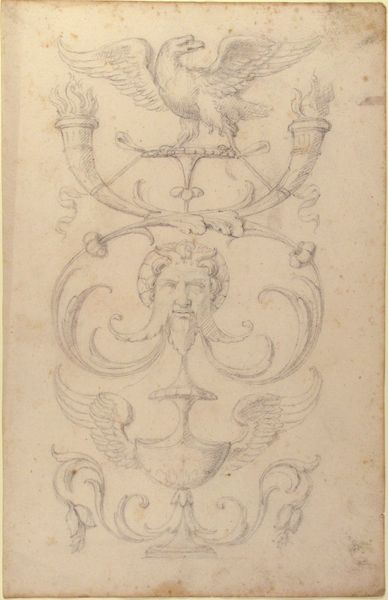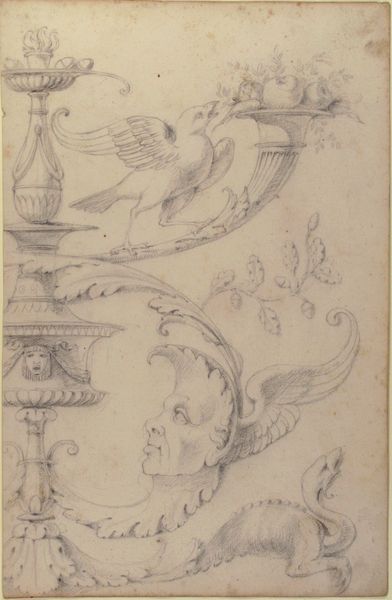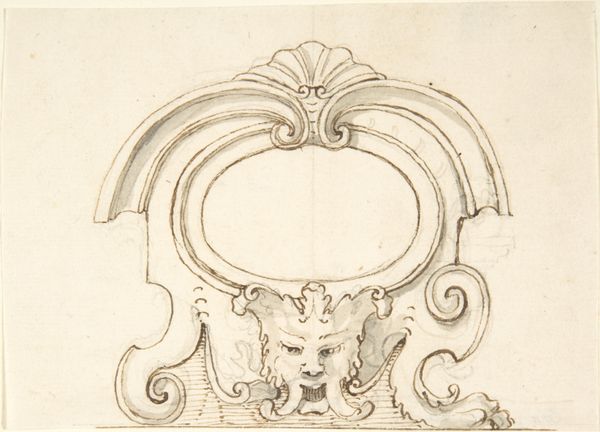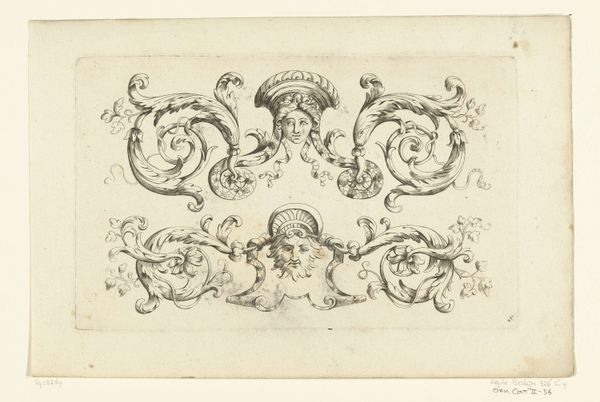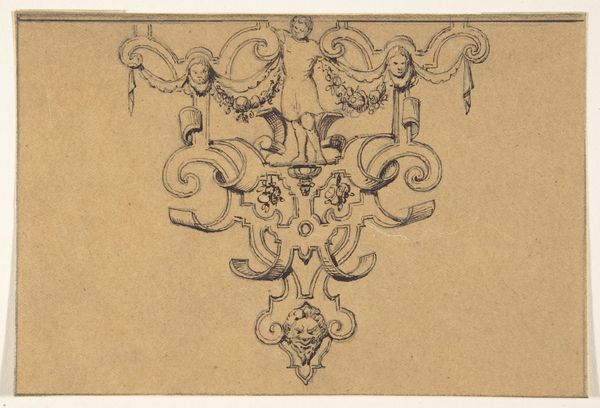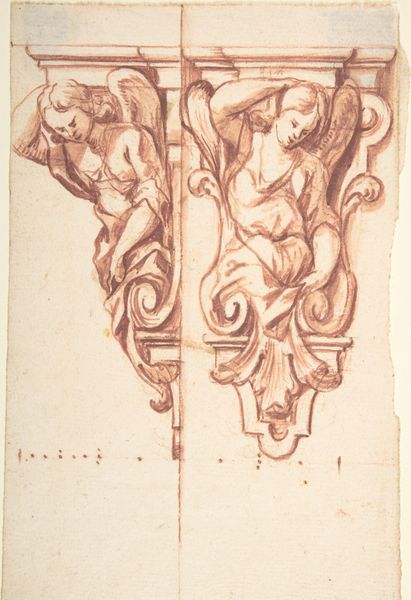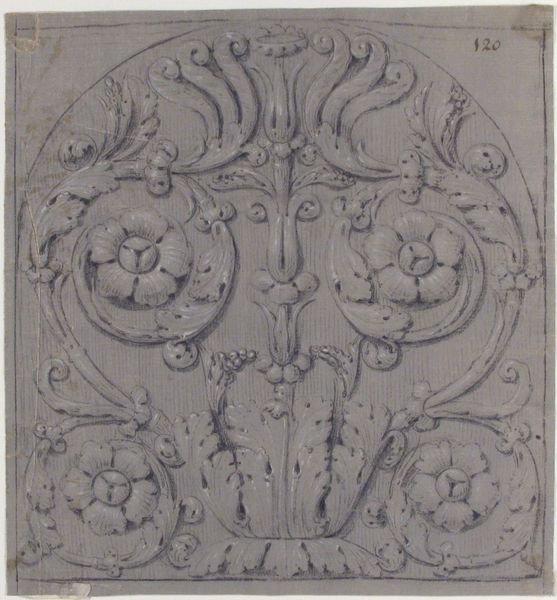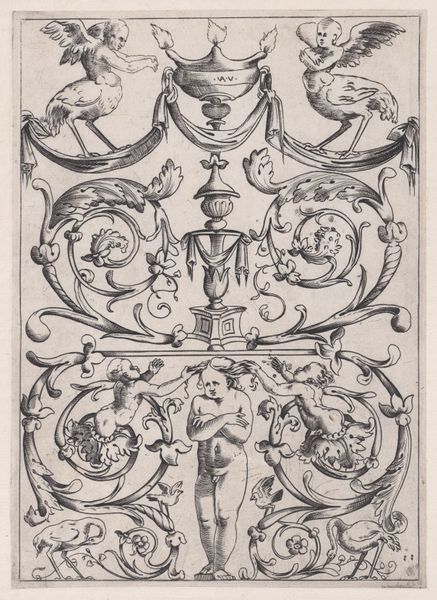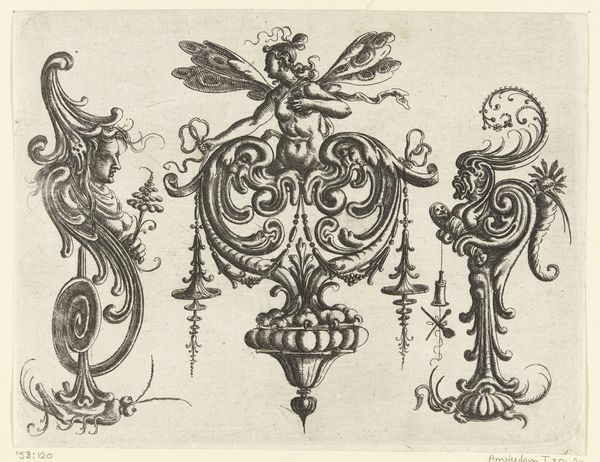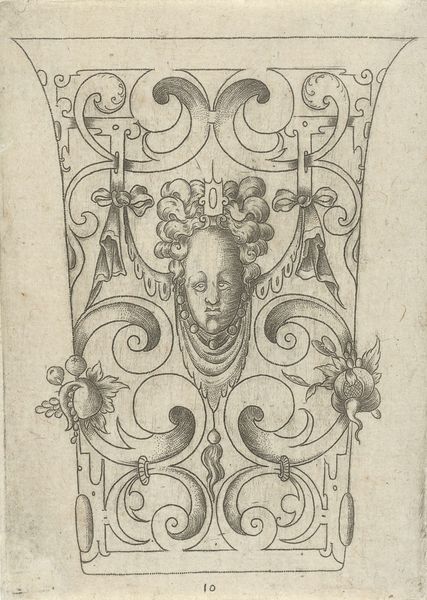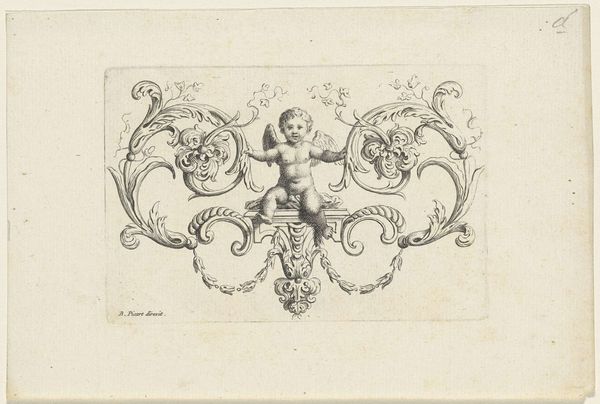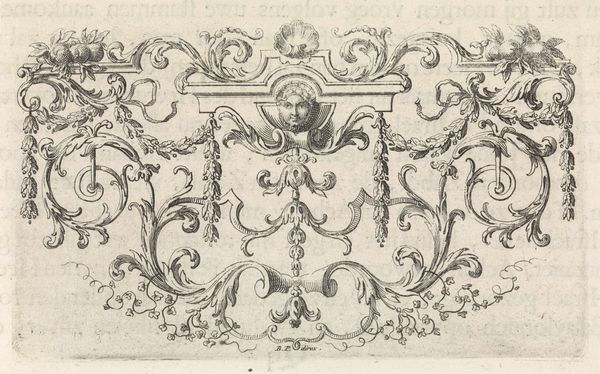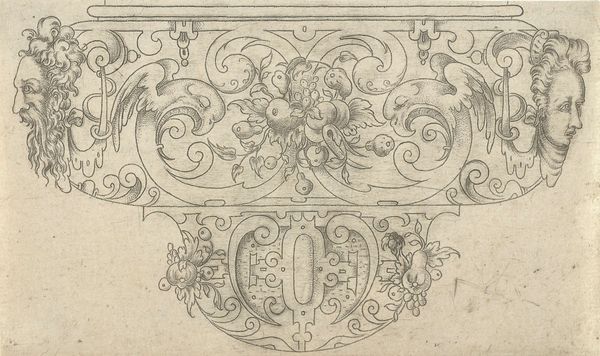
Drawing of a Grotesque after a 16th-century Decorative Relief. 1770 - 1830
0:00
0:00
drawing, pencil
#
drawing
#
classical-realism
#
figuration
#
pencil
#
history-painting
#
academic-art
#
grotesque
Dimensions: sheet: 13 7/16 x 8 9/16 in. (34.1 x 21.8 cm)
Copyright: Public Domain
Curator: What a wonderfully bizarre piece! There’s an eerie, almost unsettling symmetry to it, yet it holds my attention. Editor: This is “Drawing of a Grotesque after a 16th-century Decorative Relief,” likely created between 1770 and 1830. What draws you in are likely the pencil lines and layered details, evidence of the artist’s patient work to translate an elaborate relief into a two-dimensional drawing. The paper itself bears witness to the labor. Curator: You’re right, you can see the time involved in creating the piece. It is interesting, though, that this grotesque imagery became part of decorative relief...it seems rather transgressive. What purpose might that serve? Editor: During the 16th century, and subsequently during the Neoclassical revivals when this drawing was produced, artists and patrons looked to antiquity for inspiration. Grotesques, despite their name and sometimes unsettling nature, became fashionable decorative elements, signals of erudition and taste amongst elites. So, the drawing reproduces that original artistic expression. Curator: Interesting... but what was the artist doing, re-producing the older work like this? What are they hoping to gain from it? Editor: Well, this drawing is now held in the collection of the Metropolitan Museum, where it continues to educate contemporary museum-goers of artistic lineages. Think of it as a visual index or reproduction exercise—by meticulously recreating this grotesque, the artist actively participates in preserving and perpetuating its stylistic features and social value. This wasn’t just about replicating the form, but engaging with a specific artistic tradition that still resonated in a very new, 18th century context. Curator: So, it's a conversation between generations of creators. What's fascinating to me is the almost clinical approach, the attempt to capture this intricate detail that speaks to craft and recontextualizing the past. Editor: Absolutely. Its presence in a museum shapes how we perceive artistic value, the politics of revival movements, and our understanding of shifting tastes. Curator: Food for thought! I'm left considering the broader cultural context, the dialogue between tradition and reproduction, labor, and historical preservation that works to solidify our current visual experiences.
Comments
No comments
Be the first to comment and join the conversation on the ultimate creative platform.
